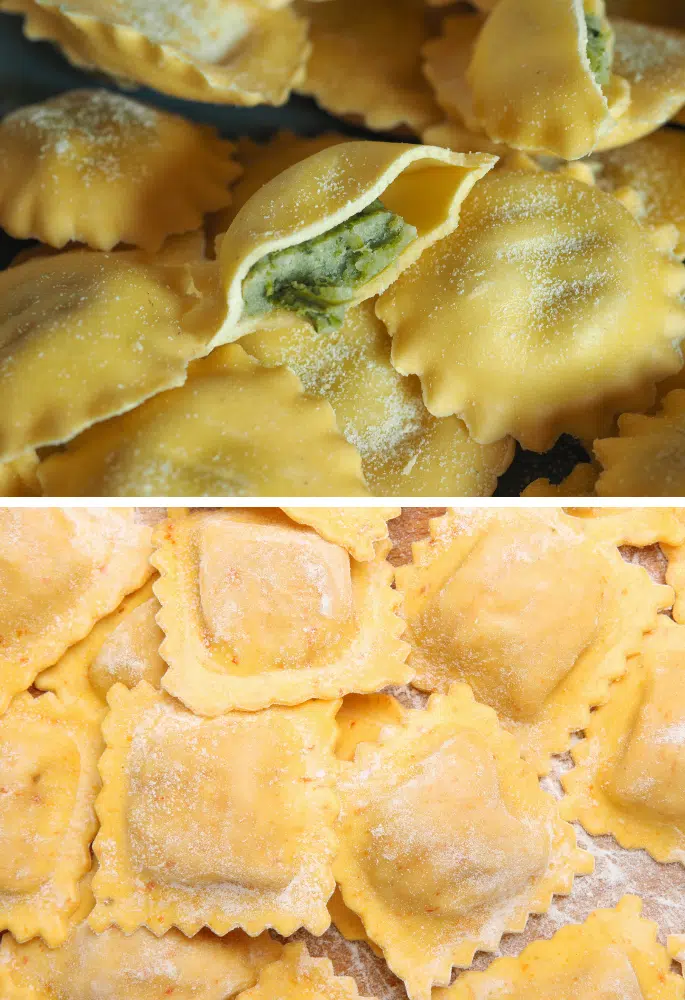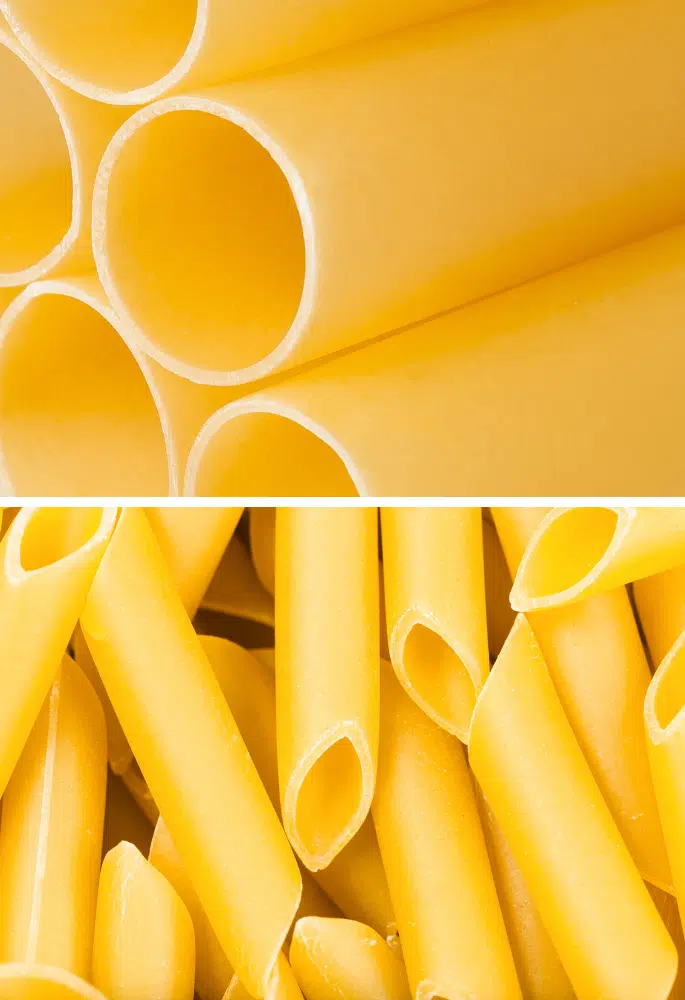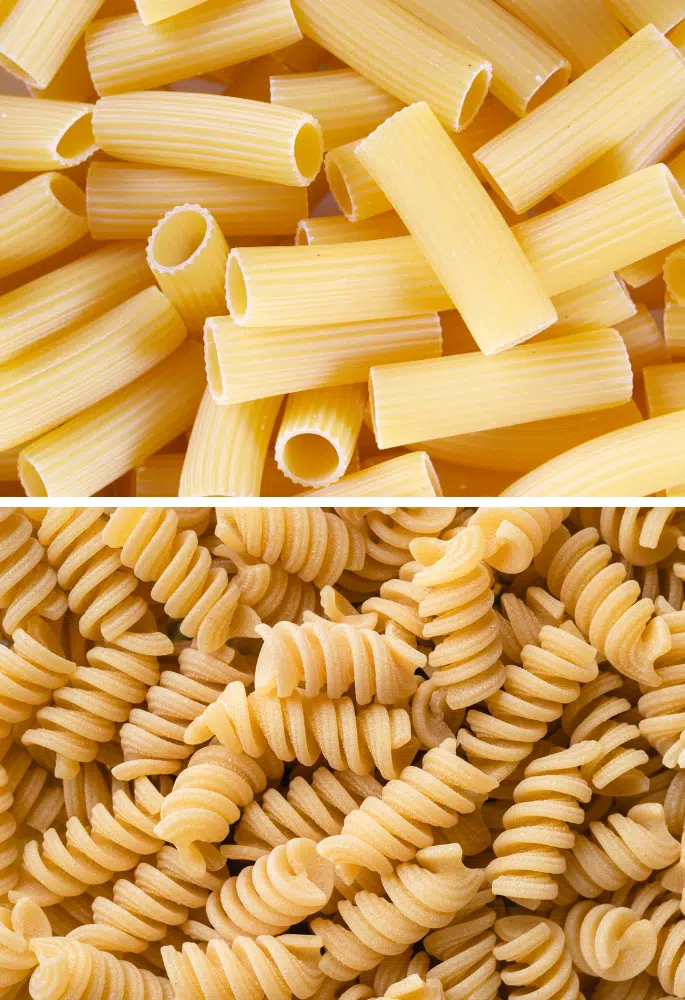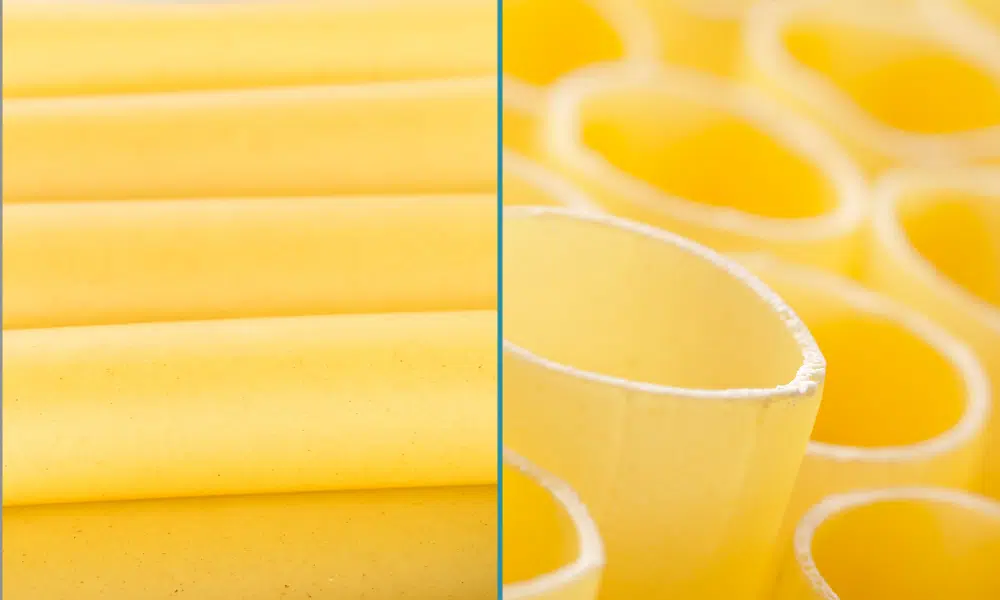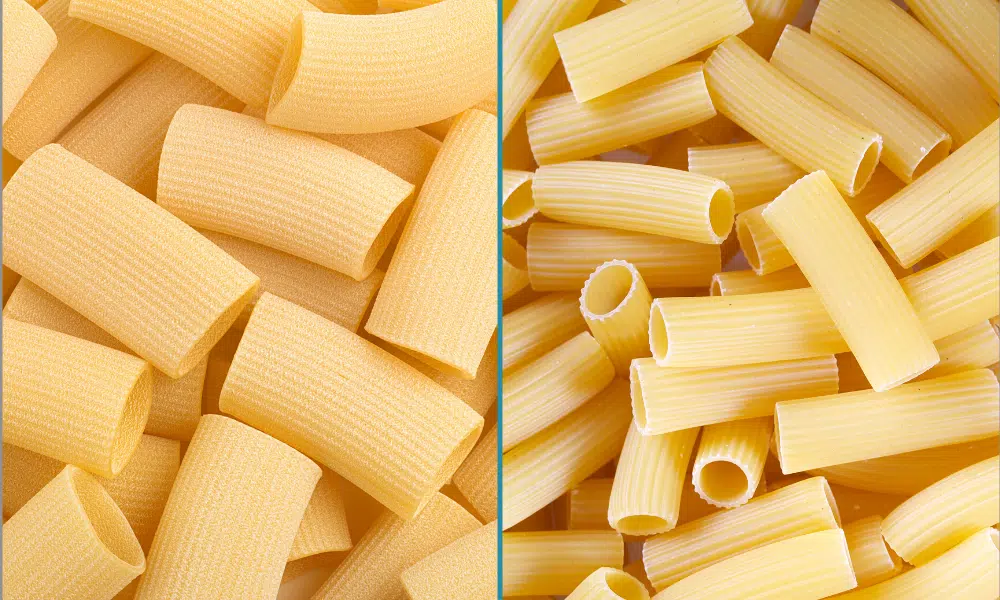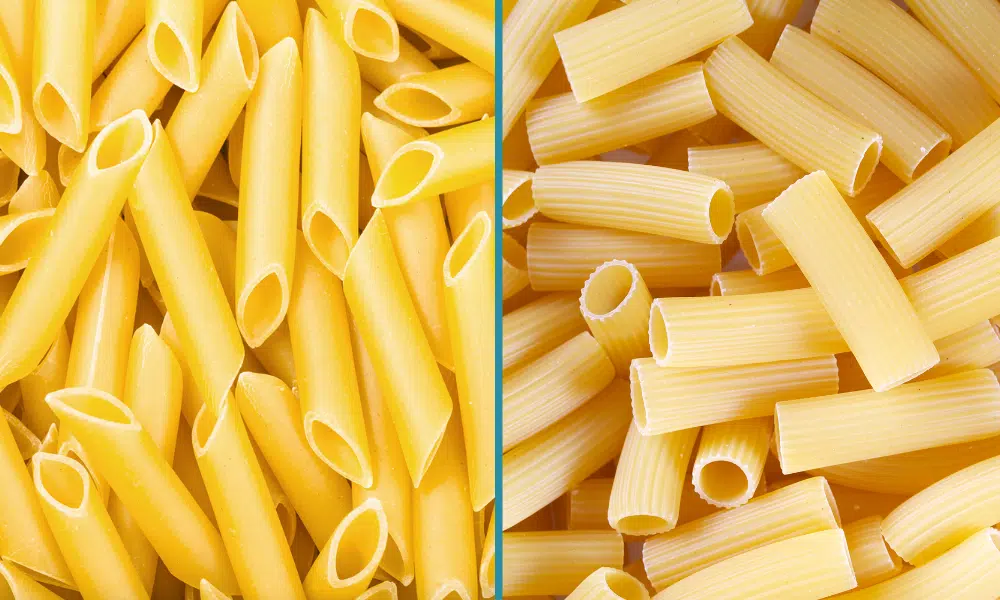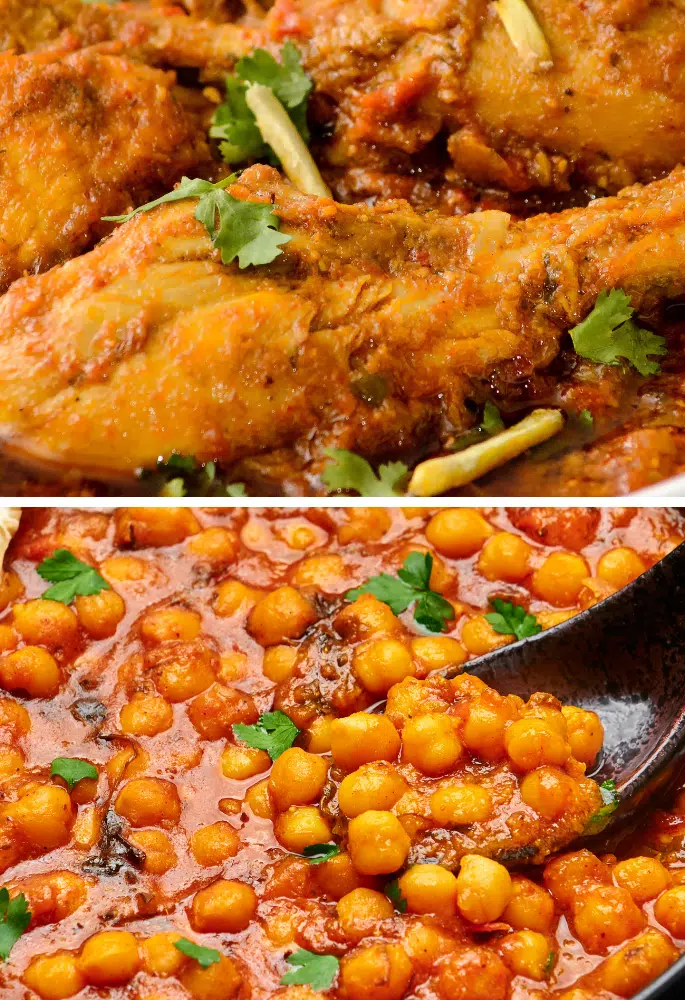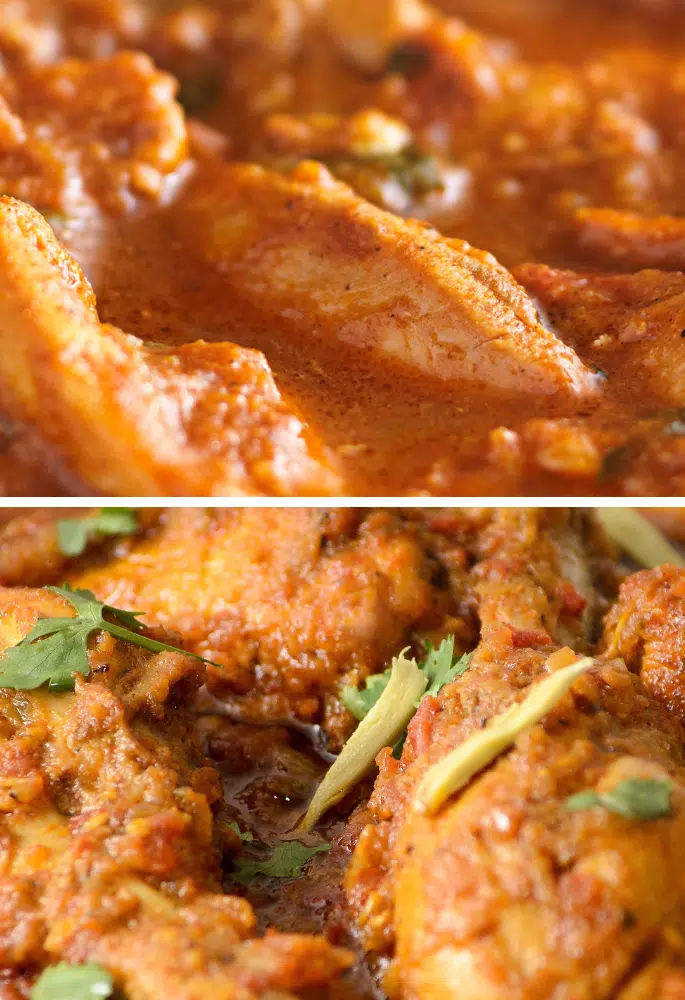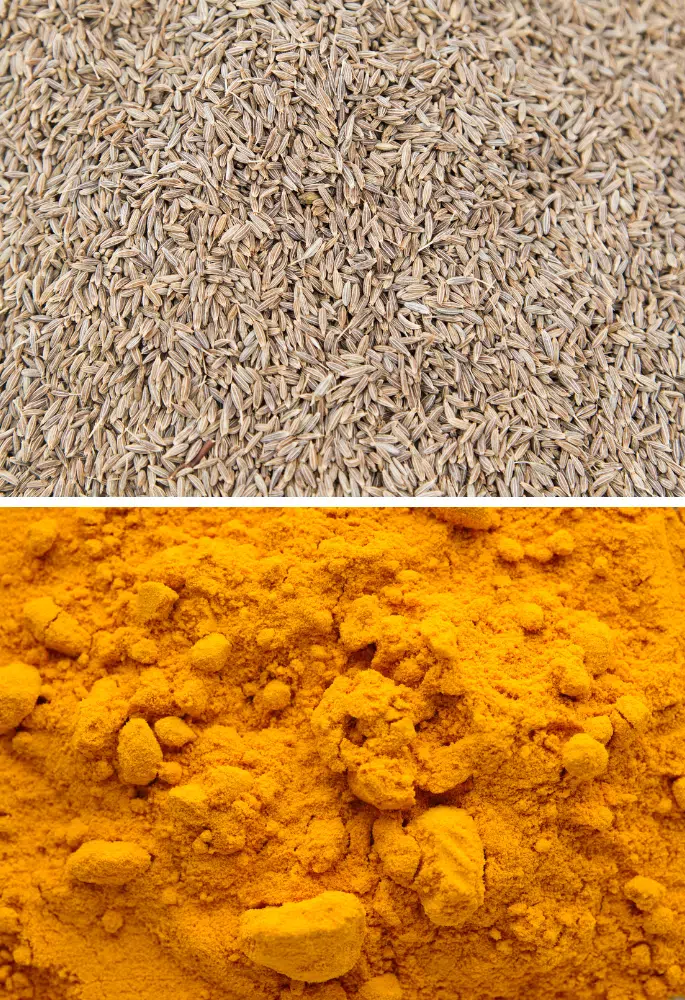Fusilli and Rigatoni, two popular types of pasta, are staples in Italian cuisine and are beloved by pasta enthusiasts worldwide. This comparison aims to shed light on the differences and similarities between Fusilli and Rigatoni – and not just the fact that they look a bit different!
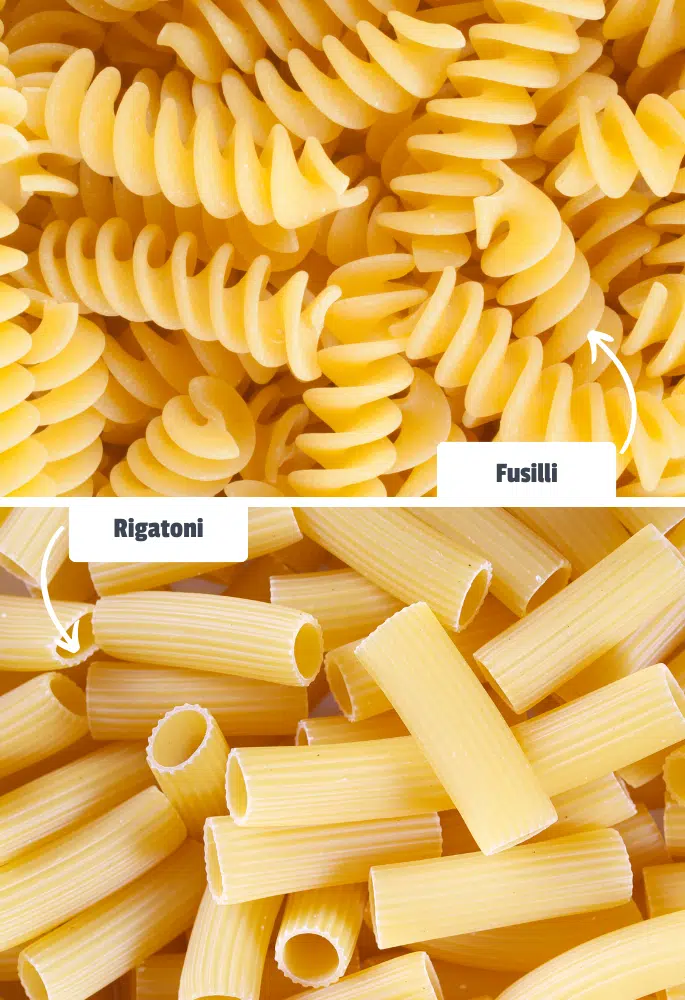
Fusilli is a corkscrew-shaped pasta that excellently holds light and creamy sauces, while Rigatoni is a large, tube-shaped pasta with ridges, ideal for hearty and chunky sauces.
What is Fusilli?
Fusilli is a type of pasta known for its spiral or corkscrew shape. Originating from Southern Italy, it is made by rolling and twisting strips of pasta dough to create its distinctive helical form.
This shape allows Fusilli to hold onto sauces effectively, making it particularly suitable for light and creamy sauces.
Its grooves and twists also trap small bits of ingredients, ensuring a flavourful bite each time. Fusilli is often used in pasta salads, baked pasta dishes, and with lighter, vegetable-based sauces.
Fusilli pairs excellently with creamy, silky smooth sauces, as its spirals trap and hold the sauce well. Pesto and creamy Alfredo sauces are great choices. It’s also ideal for pasta salads, as the grooves catch dressings and small ingredients like chopped vegetables or cheese.
What is Rigatoni?
Rigatoni is a form of tube-shaped pasta that is larger and wider than penne, with ridges on its surface. It hails from the Lazio region of Italy, particularly Rome.
The ridges in Rigatoni are designed to hold onto richer and chunkier sauces, such as meat or vegetable ragù. Its large diameter and hollow centre make it an ideal choice for baking dishes and recipes where the pasta needs to be stuffed.
Rigatoni is a favourite in heartier meals and pairs excellently with thick, robust sauces.
Rigatoni, with its large tubes and ridges, is best served with robust, hearty sauces that can cling to and fill the pasta. Rich meat sauces like Bolognese, chunky vegetable sauces, and thick, creamy sauces like Alfredo are excellent choices.
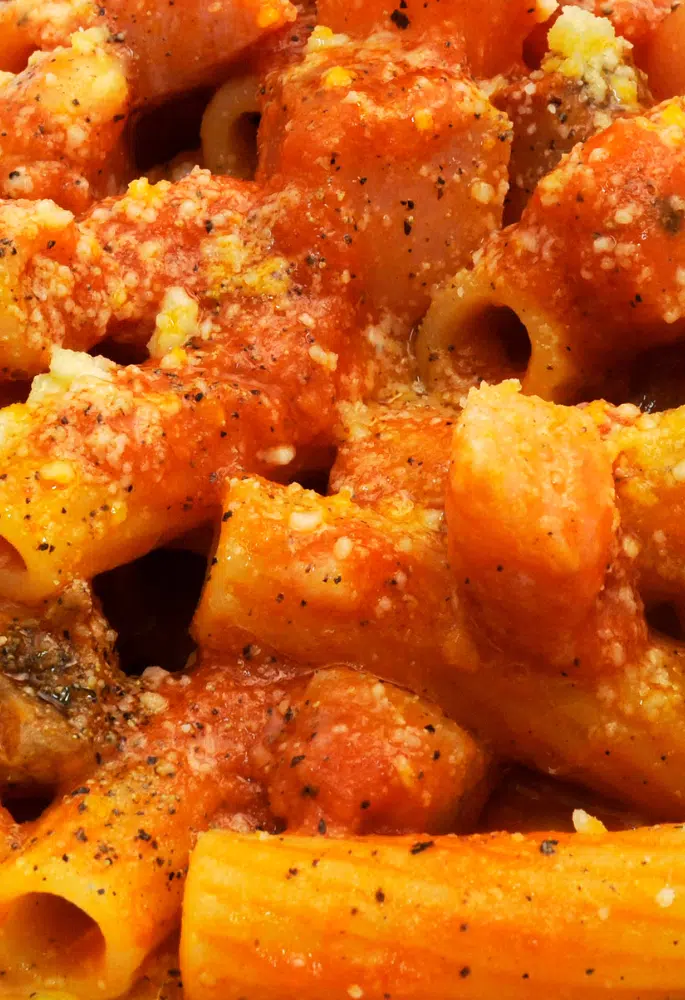
Similarities Between Fusilli and Rigatoni
Although visually they are very different, fusilli and rigatoni do share a handful of similarities (besides the fact they’re both pastas):
- Material: Both are typically made from durum wheat semolina, especially dried varieties you will likely pick up in the shops.
- Versatility: Fusilli and Rigatoni are versatile and can be used in various dishes, adapting well to different sauce types and cooking methods.
- Popularity: Both are popular choices in Italian cuisine and have a significant presence in international pasta dishes.
- Cooking Time: Both types of pasta have similar cooking times, usually boiling for around 10-12 minutes until al dente.
Differences Between Fusilli and Rigatoni
Of course, there is a fairly extensive list of things that make these two types of pasta quite different. I’ve included the obvious, but there are a few other things that make them different:
- Shape: Fusilli is spiral or corkscrew-shaped, while Rigatoni is tube-shaped with a large diameter.
- Sauce Pairing: Fusilli is better suited for lighter, creamier sauces, whereas Rigatoni excels with thicker, chunkier sauces.
- Origin: Fusilli originates from Southern Italy, and Rigatoni from the Lazio region, specifically Rome.
- Texture: Fusilli offers a unique texture due to its twists and turns, while Rigatoni’s ridges provide a different kind of texture that interacts well with hearty sauces.
- Culinary Use: Fusilli is commonly used in pasta salads and with vegetable-based sauces, whereas Rigatoni is preferred in baked pasta dishes and with meaty sauces.
Yes, you can substitute fusilli for rigatoni in most recipes. While fusilli’s spiral shape is different from rigatoni’s tube shape, both pastas work well in capturing sauces. The main difference will be in texture and the way the pasta holds the sauce, but the substitution generally works well.
Fusilli vs Rigatoni: Which Wins?
If you could only use one type of pasta for the rest of your life, which would you vote for? Do you prefer the intricate spirals of fusilli or the robustness of rigatoni?
Do You Prefer Fusilli or Rigatoni?
Hailing from Liverpool, Oliver is an adventurous chef with a penchant for exploring diverse cuisines and novel ingredients. Ollie, combining his love for local British flavours with global influences, brings innovation and charm to home cooking.


